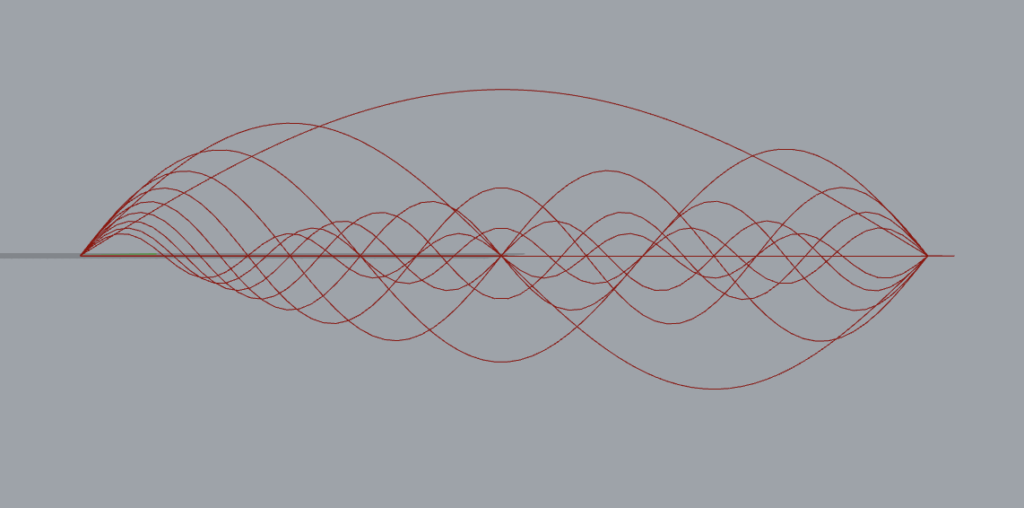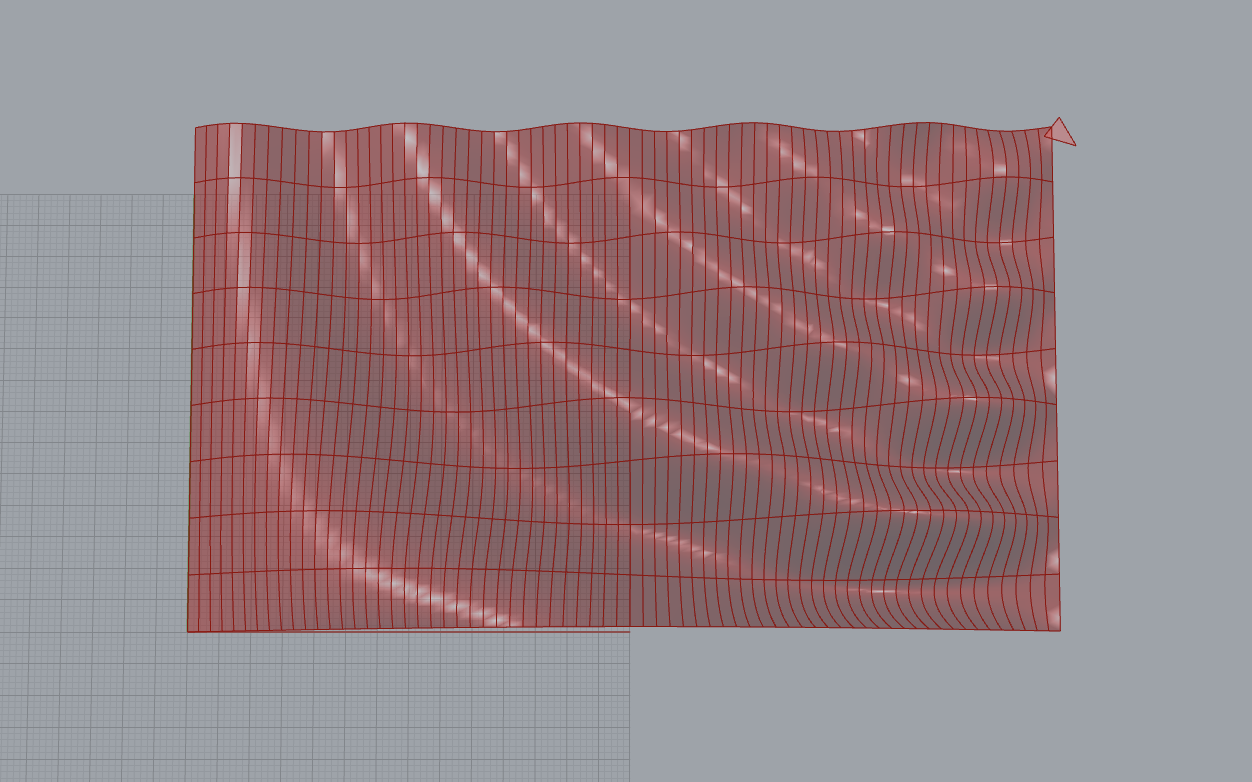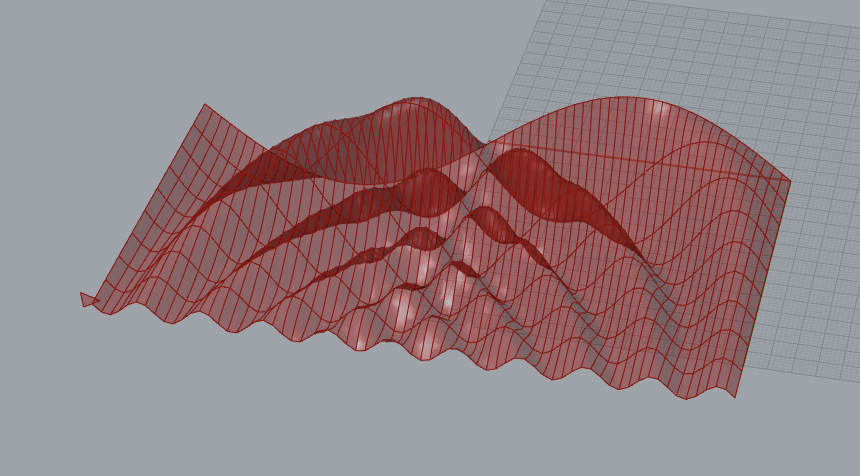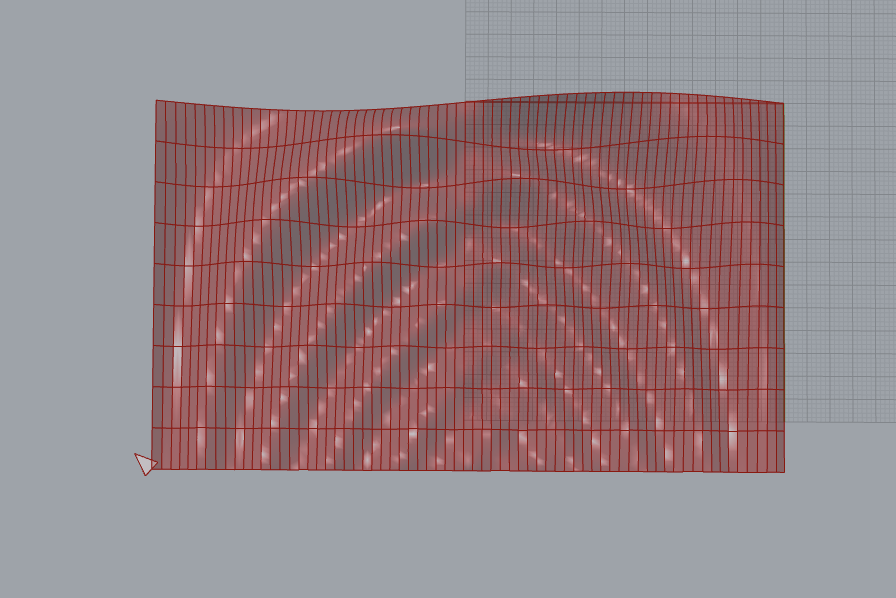So far for my project I have learned how to use the CNC machine from Valery, learned how to use rhino models with the CNC machine, planned out my designs, designed one side of the drum in rhino, and begun understanding a geometic shape I want to compute and then tile.
I will be doing 4 different designs for the 4 sides of the drum. One design that I finished is of the harmonic series (aka the overtone series):

The harmonic series in music is a fascinating concept of sound. I’ll explain it in more detail in my final post, but basically, sounds in nature don’t just produce one singular frequency (or pitch). They also produce harmonic frequencies, which have integer multiples of the frequency of the fundamental note – or the main note that we hear. Different harmonics (and inharmonics) are more pronounced by different instruments, which is why you can play the same notes on a piano, flute, and guitar, but they all have their own distinctive sound characteristics. The first overtone has twice the frequency of the fundamental, producing a note that is an octave higher. The second harmonic has 3x the frequency of the fundamental, providing the octave+fifth of the fundamental, etc. If you’ve ever heard throat singing or overtone/polyphonic singing, the singers are shaping their vocal pathway to emphasize harmonics and allow us to hear multiple notes more clearly at once. Anyway I think it’s beautiful so I wanted to model it:)
In Grasshopper, I used turtles to create the sine waves representing the harmonic series, and then spaced each harmonic wave out so that I could loft them to create an undulating surface connecting the waves. I really like how this turned out.



I would like to hear if you guys think prefer how the model above looks or the model below? They are the same exect the one below has twice the amount of sine wave.



For the another side, I want to create undulations that remind me of the light reflections of water. I also want to create a tiling of Metatron’s cube (based on hexagon tiling, which I haven’t figured out yet). Lastly, I’m thinking of doing a bit map representation of cymatics – the visual patterns that frequencies make, usually in on sand on a plate, or the surface of water. I may replace one of these with one of my other ideas, but these are what I’m currently planning on. I’m really excited to explore different concepts we learned throughout the semester, as well as playing with the material of wood and the machinery of CNC.



Timeline:
- Nov 28 – Finish planning construction of drum and obtaining materials
- Nove 29 – Finalize side 2
- Nov 30 – Finalize side 3
- Nov 31 – Finalize side 4
- Weekend – begin assembly of base of drum
- Dec 4/5 – CNC milling
- Dec 6 – Attach milled pieces to base
My deliverable will be the drum with the four sides computationally designed and fabricated. I am no longer mapping the tongues to computation/sound because I was struggling to find a way to do that effectively and in a way that made the computation aspect valuable – and the wood for the top is pricey so experimenting would be costly.
I’m hoping that I am able to keep up with my timeline well, I’m definitely nervous with the deadline approaching so quickly, but I’m so excited to see how everyone’s projects turn out!
Hi Lauren, I like your project idea and it’s so cool that there is a lot of moving parts and details. I wish you all the best with assembling the drum! Can’t wait to see it!
Thank you Raneem, I’m very excited about it as well:)
The models you have for the sine waves are beautiful, although since you asked I am slightly more drawn to the above one with the single set of waves. I hope you the best of luck in your final project and am excited to see the final results.
Hi Lasair, thank you for your input! I’m feeling super indesicive about it haha